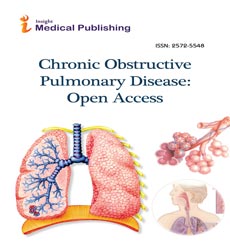Abstract
COPD Morbidity and Mortality in Ukraine after Tobacco Control Policies Implementation
Tobacco is a known cause of COPD and smoking cessation is known reduce the risk of developing COPD. Whether tobacco control policies resulting in decreased prevalence of smoking are followed by short-term changes of morbidity and mortality indicators is unknown. We explored how recent successes in tobacco control in Ukraine are reflected in routinely collected data related to COPD.
Methods: We used publicly available sources of information: European Mortality database for standardized death rates and aggregated results from panel household surveys with questions on any and respiratory chronic diseases for morbidity.
Results: In early 1980s, chronic pulmonary mortality in Ukraine was 25-30 deaths/100 000, it increased to almost 60/100 000 in 1995 and then was steadily declining to 18/100 000 in 2010s. The upward mortality trend in 1987-95 was more expressed in middle-aged people compared with older ones. The declining mortality trend after 1995 was accelerating over time, was similar among men and women and much faster in middle-aged people than in older ones. The accelerated decline of respiratory mortality was observed during the economic recession of late 1990-s and in years of increased cigarette real prices. The dynamics of self-reported major chronic non-communicable diseases reveals the decline in chronic bronchitis and emphysema from 33/1000 in 2008 to 23/1000 in 2012, while no changes were observed in all chronic, cardiovascular diseases and cancer.
Conclusion: Major changes in COPD mortality in 1980-2010 were concurrent with changing economic conditions and could only partially be tobacco-related. Tobacco control policies, conducted in Ukraine since 2005 could accelerate then happening COPD mortality decline. In the time of both mortality increase and decrease, middle-aged people reacted faster than those older ones, probably due to greater role of behavioral factors in younger people. COPD morbidity started to decrease only since 2009 when cigarettes became much less affordable.
Author(s):
Tatiana I Andreeva and Konstantin S Krasovsky
Abstract | Full-Text | PDF
Share this

Google scholar citation report
Citations : 130
Abstracted/Indexed in
- Google Scholar
- China National Knowledge Infrastructure (CNKI)
- Publons
- Geneva Foundation for Medical Education and Research
- Secret Search Engine Labs
Open Access Journals
- Aquaculture & Veterinary Science
- Chemistry & Chemical Sciences
- Clinical Sciences
- Engineering
- General Science
- Genetics & Molecular Biology
- Health Care & Nursing
- Immunology & Microbiology
- Materials Science
- Mathematics & Physics
- Medical Sciences
- Neurology & Psychiatry
- Oncology & Cancer Science
- Pharmaceutical Sciences

